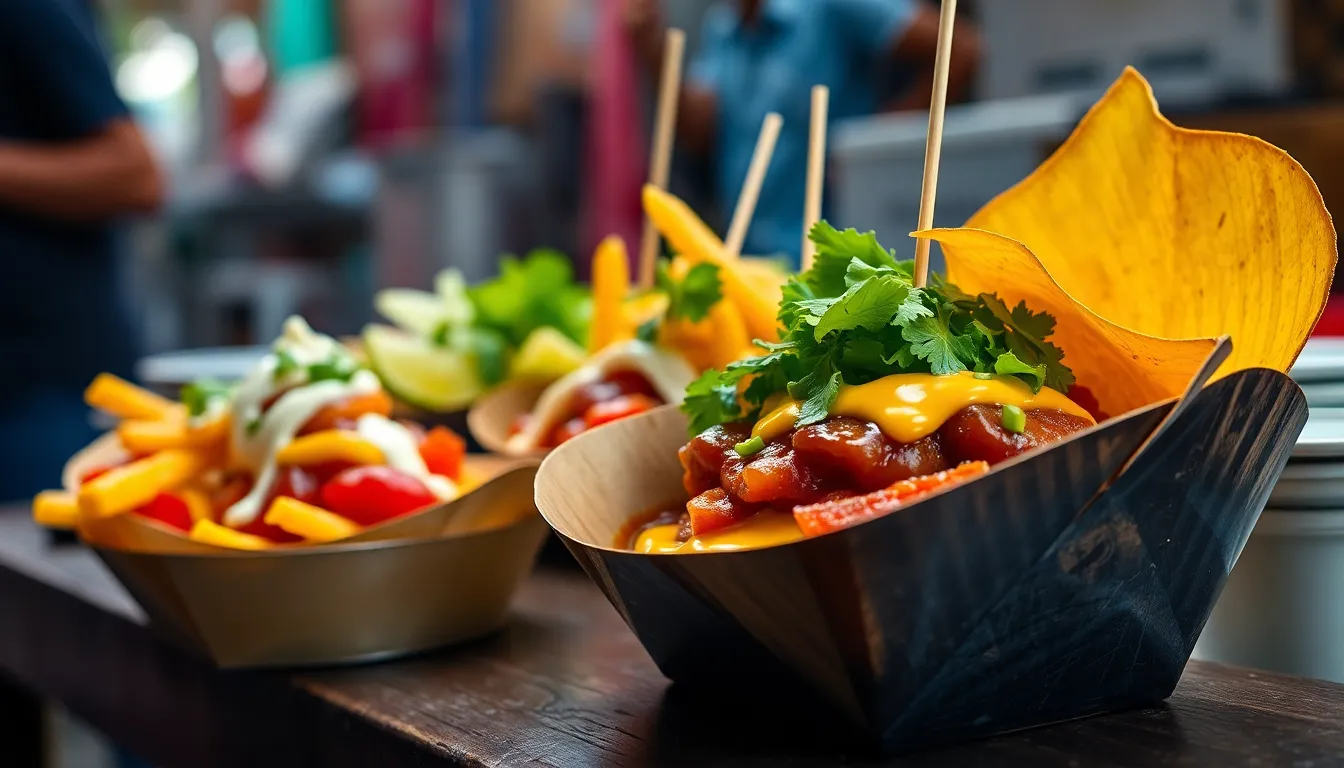Discover the Regional Flavors of Brazil: A Culinary Journey Through the Country
Brazil is a country that boasts an incredibly rich culinary heritage, woven together by diverse cultures, traditions, and flavors. With each region offering its own unique dishes and ingredients, Brazilian cuisine is a vibrant tapestry of tastes that reflects the country’s history and geography. Join us on a gastronomic exploration through Brazil’s regions, where we will savor the diversity and culinary delights that each area has to offer.
I. The North: Amazonian Delights and Indigenous Influences
A. Unique Ingredients from the Amazon Rainforest
The Amazon rainforest is a treasure trove of unique ingredients, many of which are integral to the region’s culinary landscape. Here are some key ingredients that define Amazonian cuisine:
- Açaí: A superfood berry packed with antioxidants, often served as a smoothie bowl or in desserts.
- Tucupi: A yellow sauce extracted from manioc, essential for many traditional dishes.
- Manioc (Cassava): A starchy root vegetable used in various forms, from flour to chips.
B. Signature Dishes to Try
When exploring the North, be sure to try these signature dishes:
- Pato no Tucupi: Tender duck cooked in a flavorful tucupi sauce, often served with rice.
- Tacacá: A traditional soup made with tucupi, jambu (an Amazonian herb), shrimp, and spices.
C. Culinary Traditions of Indigenous Peoples
Indigenous peoples of the Amazon have greatly influenced local cooking methods. They utilize fresh ingredients, often sourced directly from the rainforest, and employ techniques such as steaming and roasting over open flames. The cultural significance of these methods reflects a deep respect for the land and its resources.
II. The Northeast: Vibrant Tastes of Bahia and Beyond
A. The Fusion of Cultures: African, Indigenous, and Portuguese
The Northeast of Brazil is a melting pot of cultures, with African, Indigenous, and Portuguese influences shaping its culinary identity. The result is a rich and flavorful cuisine that is deeply rooted in history.
B. Must-Try Dishes
Don’t miss out on these must-try dishes from the Northeast:
- Moqueca: A Bahian fish stew made with coconut milk, tomatoes, onions, and palm oil, cooked in a traditional clay pot.
- Acarajé: Deep-fried black-eyed pea fritters stuffed with spicy shrimp and served with a tangy sauce.
C. Celebrations and Festivals
The Northeast is home to vibrant food-related festivals, such as the Festa Junina, which celebrates traditional foods like pamonha (corn pudding) and canjica (sweet corn porridge). These celebrations highlight the region’s rich culinary heritage and bring communities together through food.
III. The Central-West: Savory Flavors of the Cerrado
A. The Heart of Brazil: A Focus on Beef and Barbecue
The Central-West region is known for its extensive cattle ranching, making beef a centerpiece of its cuisine. Barbecue, or churrasco, is a beloved social tradition in this area.
B. Traditional Dishes to Savor
Here are some traditional dishes you must savor in the Central-West:
- Picanha: A flavorful cut of beef that is grilled to perfection and often served with farofa (toasted cassava flour).
- Arroz com Pequi: A unique rice dish cooked with pequi fruit, which has a distinct taste and aroma.
C. The Role of Agriculture in Regional Identity
Agriculture plays a crucial role in shaping the identity of the Central-West. Farmers cultivate a variety of crops, from soybeans to fruits, which are integral to local cuisine. The region’s culinary practices reflect a strong connection to its agricultural roots.
IV. The Southeast: Urban Flavors and Culinary Innovation
A. The Melting Pot of Brazilian Cuisine
The Southeast is Brazil’s most urbanized region, characterized by a fusion of cultures brought by immigrants from Italy, Japan, and the Middle East. This blend has led to innovative culinary creations that redefine traditional Brazilian cuisine.
B. Iconic Dishes to Experience
Don’t leave without experiencing these iconic dishes:
- Feijoada: A hearty black bean stew with pork, served with rice, collard greens, and orange slices.
- Pastel: A crispy fried pastry filled with various ingredients such as cheese, meat, or vegetables.
C. The Rise of Contemporary Brazilian Cuisine
In recent years, a new wave of chefs and restaurants has emerged in the Southeast, blending traditional recipes with modern techniques and presentations. This evolution showcases the dynamic nature of Brazilian cuisine and its adaptability to global trends.
V. The South: European Influences and Traditional Comfort Foods
A. The Region of Wine and Traditional Fare
The South is renowned for its wine production, particularly in the Serra Gaúcha region, where the climate is ideal for vineyards. This region’s culinary landscape is rich with traditional fare that complements its wine culture.
B. Signature Dishes to Discover
Explore these signature dishes from the South:
- Chimarrão: A traditional mate tea consumed throughout the region, often shared among friends.
- Barreado: A slow-cooked meat stew that is served with rice and banana, originating from the coast of Paraná.
C. The German and Italian Heritage
The South of Brazil has a strong influence from German and Italian immigrants who brought their culinary traditions. Dishes like strudel and polenta are commonly found, showcasing the region’s rich cultural tapestry.
VI. Table of Regional Dishes and Their Origins
A. HTML Table: A Quick Reference Guide
| Dish | Region | Main Ingredients |
|---|---|---|
| Pato no Tucupi | North | Duck, tucupi, rice |
| Tacacá | North | Tucupi, shrimp, jambu |
| Moqueca | Northeast | Fish, coconut milk, tomatoes |
| Acarajé | Northeast | Black-eyed peas, shrimp |
| Picanha | Central-West | Beef, farofa |
| Arroz com Pequi | Central-West | Rice, pequi fruit |
| Feijoada | Southeast | Black beans, pork, rice |
| Pastel | Southeast | Pastry, cheese or meat |
| Chimarrão | South | Mate tea |
| Barreado | South | Meat, rice, banana |




